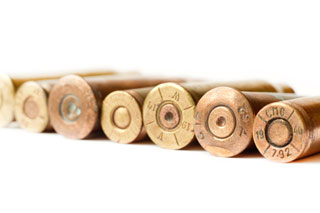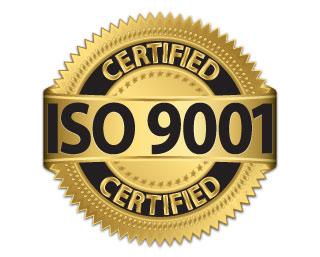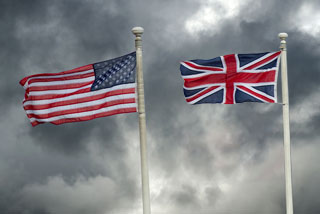A Brief Intro to ISO 9000
 ISO 9000 came into effect in 1980 but the need for a standardized quality management system was first recognized during World War II. During the war, American and British soldiers were fighting side by side but were unable to use each other’s rifles because each country had its own calibration system. To correct the problem, the British set a guideline standardizing military equipment manufacturing, which was gradually followed by the allies. This standard was the foundation of ISO 9000 and the ISO 9000 certification process we have today.
ISO 9000 came into effect in 1980 but the need for a standardized quality management system was first recognized during World War II. During the war, American and British soldiers were fighting side by side but were unable to use each other’s rifles because each country had its own calibration system. To correct the problem, the British set a guideline standardizing military equipment manufacturing, which was gradually followed by the allies. This standard was the foundation of ISO 9000 and the ISO 9000 certification process we have today.
ISO 9000
Based in Geneva, Switzerland, ISO is the world’s single largest developer of International Standards with over 3,368 technical bodies representing 162 different countries. Over 19,000 standards have been published covering many aspects of technology and manufacturing.
ISO:
- sets quality standards for the manufacturing and service sectors
- reviews the standards periodically
- publishes the standards so that private and public corporations around the world can try to meet them
 ISO 9000 is primarily a set of guidelines to establish a uniform quality management system worldwide. Using ISO 9000, you can make changes in your operation to meet the norms set by ISO, giving your customer assurance that your business meets international quality standards. Once your company is found to be compliant to the ISO 9000 standard pursuant to an onsite audit, then your organization is recommended for registration. The company should wait for the certificate to be issued before publishing their registration. Registrars quite often refer to this stage as “Recommended for Certification”. Your customers will know once you receive your certificate that, your organization has a registered quality management system, and they will also rely on your company to work at maintaining your quality management system in conjunction with your product and service.
ISO 9000 is primarily a set of guidelines to establish a uniform quality management system worldwide. Using ISO 9000, you can make changes in your operation to meet the norms set by ISO, giving your customer assurance that your business meets international quality standards. Once your company is found to be compliant to the ISO 9000 standard pursuant to an onsite audit, then your organization is recommended for registration. The company should wait for the certificate to be issued before publishing their registration. Registrars quite often refer to this stage as “Recommended for Certification”. Your customers will know once you receive your certificate that, your organization has a registered quality management system, and they will also rely on your company to work at maintaining your quality management system in conjunction with your product and service.
How did ISO arrive at the ISO 9000 guidelines?
- By considering the views of manufacturers, vendors, consumer groups, laboratories, government, engineering, and research organizations.
- Through the identification and analyses of best practices and effective global solutions.
- After discussing the findings and reaching consensus on the guidelines that now make up ISO 9000 and lead to ISO 9000 certification.
ISO 9000 Certification
ISO 9000 certification began in 1980, when the standards were first published. Since that time, ISO has reviewed and revised them every five years to keep up with our constantly changing world. ISO 9000 is reviewed and adapted to reflect an evolution in the following:
- Technology
- Safety standards
- Material procurement
- Vendor selection
Certification bodies called “registrars” perform ISO 9000 certification. One of the founders of our company continues to work with registrars in this capacity and serves to guide our organization in the best practices to ensure that our client’s certification projects are successfully implemented. ISO 9001:2015 certification should be a driving force for organizational improvement in your company.
History of ISO 9000 Certification
 The United States adopted British military standards for military equipment manufacturing Mil-Q-9858 and Mil-I-45208 between 1959 and 1963. NATO members then adopted the allied quality assurance practices for their own militaries. The British improvised the NATO standards in 1979 and formulated BS-5750. Initially, ISO 9000:1987 had the same guidelines of the UK Standard BS 5750 for quality management systems and was implemented according to the scope and activity of the organization. In 1987 ISO added three models of standards for ISO 9000 certification. The different models or versions have different requirements depending on the organization’s activity and its scope for implementation. ISO 9001:1987 focused on companies that manufacture new and existing products that have different designs. It covered design, development, production, installation and service. ISO 9002:1987 focused mainly on production, installation and servicing. ISO 9003:1987 insisted that the finished product be inspected and tested for quality. This standard defines a product using quality system vocabulary: a physical object, service, or software. In 1994 the ISO 9000 standard was revised to make it more holistic.
The United States adopted British military standards for military equipment manufacturing Mil-Q-9858 and Mil-I-45208 between 1959 and 1963. NATO members then adopted the allied quality assurance practices for their own militaries. The British improvised the NATO standards in 1979 and formulated BS-5750. Initially, ISO 9000:1987 had the same guidelines of the UK Standard BS 5750 for quality management systems and was implemented according to the scope and activity of the organization. In 1987 ISO added three models of standards for ISO 9000 certification. The different models or versions have different requirements depending on the organization’s activity and its scope for implementation. ISO 9001:1987 focused on companies that manufacture new and existing products that have different designs. It covered design, development, production, installation and service. ISO 9002:1987 focused mainly on production, installation and servicing. ISO 9003:1987 insisted that the finished product be inspected and tested for quality. This standard defines a product using quality system vocabulary: a physical object, service, or software. In 1994 the ISO 9000 standard was revised to make it more holistic.
In 2000, ISO introduced another new version: ISO 9001-2000, which further combined quality assurance, quality control and the quality management system into one basic standard and also aligned the 9001:2000 further with ISO 14000. The 2000 version emphasized involvement by senior management, among other important factors. Today, quality is incorporated into a business management system and lessens the delegation of quality functions to only quality assurance departments and their executives.
ISO 9001:2008 the fourth revision was released in November of 2008 and has served the quality community quite well over its tenure. Consequently, in September of 2015 the latest revision of ISO 9000 Standard was issued, this ISO 9001:2015 revision is significant in terms of structure, terms and working context. If you are interested in becoming ISO 9001:2015 certified, please complete our request for service questionnaire, and we will contact your organization to answer any questions you may have.
